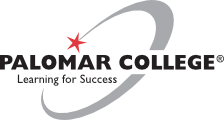
Course Outline
GEOL 159 - Small Unmanned Aircraft Systems for Veterans
Fall Semester 2020
- Recall and explain the steps required to complete all preflight operations.
- Identify and assess UAS-related volunteer and internship opportunities.
- Locate and identify small and large sector UAS employment opportunities.
- Explain the importance of thorough marketing and competition research for UAS entrepreneurship.
- UAS Opportunities
- Volunteer work
- Internships
- Careers
- Search and Rescue
- Flight Instructor
- Videography and Film
- Real Estate
- Construction
- Small sector employment
- Large sector employment
- Entrepreneurship
- Market and competition research
- Marketing strategies
- Available resources
- Education opportunities
- Importance of volunteer work
Students will be required to read through the FAA's Guidlines for Civil and Commerical Drone Use, also known as Know Before You Fly.
Students are encouraged to read the read the official FAA Remote Pilot sUAS Study Guide and lecture presentations.
Students are expected to produce a summary of each topic and critically evaluate how it relates to their career goals. Each week students will participate in an online discussion about each topic.
Students are encouraged to read through a number of volunteer, internship, and employment opportunities and evaluate each with respect to their career goals.
Students are expected to research each topic presented. This will include searching for volunteer and internship opportunities, contacting veterans services, and passing the FAA Part 107 exam.
Students are expected to spend a minimum of three hours per unit per week in class and on outside assignments, prorated for short-term classes.
- Class Participation
- Class Work